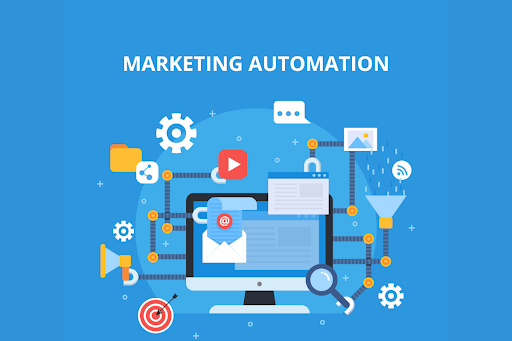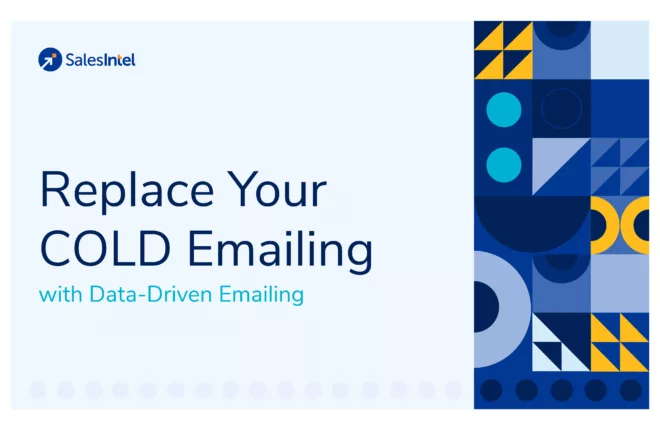Account-based marketing (ABM) is an increasingly popular concept, placing an emphasis on personalizing an organization’s marketing efforts to reach highly sought-after target accounts. As business goals have shown a need for greater personalization, AI software has proven instrumental in optimizing ABM strategies.
With an AI marketing platform, businesses can quickly understand customer buying behaviors, generate highly accurate insights, and create individualized campaigns with ease. In this article, we’ll explore the role of AI software in ABM and how it can help maximize campaign results.
What is account-based marketing?
Simply put, account-based marketing focuses on individual customer or prospect accounts. Rather than relying on broad campaigns targeting many people, ABM targets individual accounts with highly personalized messages and offers.
Thanks to its personal touch and ability to generate quality leads, ABM has become increasingly popular among marketers looking for new ways to build relationships with customers. This strategy ensures that each marketing message resonates with the customer’s needs.
How can AI software help with ABM?
Artificial intelligence software plays an important role in the success of account-based marketing strategies; understanding the broader benefits of AI in marketing helps put these capabilities in context. Below are some of the core ways how the AI marketing app can help with ABM.
1. Segmenting your market
The segmentation process is one of the most important tasks associated with ABM, and it’s where AI shines. The software can differentiate between various customer types based on individual needs and preferences.
With this function, you can focus your marketing efforts more effectively by targeting specific people based on the data collected by AI software. You can also quickly identify high-value prospects who are more likely to convert into customers.
2. Identifying key decision makers
This process can be time-consuming and tedious, but AI marketing automation can help leverage this task. With the software, you can develop a more detailed understanding of your customers and the roles they play in the buying process.
As a result, you’ll be able to craft targeted communications that will resonate with key decision-makers and persuade them to consider, and ultimately purchase your product or service. This could involve creating content tailored to their interests or offering incentives and discounts that are attractive to them.
3. Generating targeted content
Now here comes the spice. AI software can help create personalized emails, website content, ads, and other marketing messages. It ensures that customers receive relevant messages instead of generic ones that may not resonate with them.
Some companies have noted that customers get disappointed whenever they receive generic communications. Thanks to AI, you’ll have higher chances of getting and maintaining satisfied customers.
4. Automating repetitive tasks

Data management, customer outreach, and campaign monitoring. These are some of the repetitive tasks incorporated with ABM. While they’re necessary for your business’ success, they may require a lot of focus and dedication.
The solution? AI software with optimal data analytics integrations. By combining AI with the best data analytics software solutions and features, you can collect insights that can help further refine your target audience and improve overall campaign performance. This allows you to create more effective promotions in converting leads.
5. Personalizing the buyer’s journey
Gone are the days of generic email blasts with little return on investment. AI software helps develop sophisticated strategies that specifically target prospects at each stage of their buying journey. By learning from past interactions, the software enables you to anticipate future needs and deliver customized messages that resonate with customers on an emotional level.
6. Determining when to engage
Are you killing your customers with too much engagement? AI software can give you the right pacing. By utilizing automated triggers based on customer activity and engagement levels, you can quickly determine when you should reach out. This helps alleviate the need for manual outreach efforts while still providing timely and relevant messaging that resonates with your customers.
7. Scoring leads
Lead scoring helps you prioritize your leads and focus on those most likely to convert into customers. By leveraging data collected from CRM systems, website interactions, marketing campaigns, and other sources, AI software can score leads based on how well they match the profile of their ideal customer or buyer persona.
For example, if a lead visits your website multiple times and interacts with some of your content, they’ll be assigned a higher score than a lead who simply visited once without any further engagement.
8. Measuring success
Measuring success is one of the most critical tasks for any ABM campaign. Thanks to AI software, everything can be done with just a few clicks of a button.
From tracking customer engagement levels to understanding buying behaviors, AI can help you identify opportunities for improvement and increase your ROI with greater accuracy. The software also helps you measure your impact on individual accounts and prospects, allowing you to focus on your most successful tactics and tailor content accordingly.
9. Optimizing campaigns
By analyzing customer behavior in real-time, you can better decide which content should be displayed to the right audience at the right time. The result? Optimized campaigns that generate higher click-through rates, increased conversions, and better ROI.
AI also recommends which channels will reach your audiences most efficiently. What’s more, it can automate certain tasks like sending personalized emails or scheduling social media posts for maximum reach.
10. Generating real-time insights
So this is the real deal. AI software plays an essential role in providing real-time insights that inform ABM initiatives. These data include:
- Website browsing habits
- Purchase history
- Target market trends
… and many more. AI software can also provide predictive analytics, which allows you to proactively anticipate customer needs and create relevant content that meets those needs.
Challenges in implementing AI software for account-based marketing
Despite the advantages that AI software brings to ABM, there are still some challenges in implementation.
1. Understanding what data to collect
Collecting data isn’t as simple as it seems. You must consider several factors when deciding what data type to collect.
Data can come from various sources, such as customer surveys, website analytics, and sales reports. The key is to determine which types of data will provide the most value for your ABM strategy. Once you’ve identified the appropriate sources, you can begin collecting pertinent information on your target audience to know their needs and preferences.
2. Ensuring data quality
Poor data quality means inaccurate insights, which can lead to ineffective ABM campaigns and strategies. When implementing AI software, you should make sure it validates each field value. This will help you know the information is correct.
Additionally, the software should be able to identify and remove data outliers and other anomalies that could impact accuracy and performance. Ultimately, ensuring high-quality data is essential for successful AI software implementations for ABM initiatives.
3. Getting buy-in from stakeholders
AI software can be beneficial for your business’ long-term success, but it can be difficult to convince stakeholders to invest in such software. After all, AI technology can be complicated, not to mention expensive.
That’s why you should make sure you’re ready before diving into an AI project. Start by showing stakeholders how the implementation of AI software could positively impact their business goals—whether it’s helping them reach more potential customers or driving a higher sales rate.
You should also prove that, despite any initial investment needed for implementation, there’s a strong ROI down the line once the program has been successfully executed.
4. Maintaining the software
You should be able to keep the AI functions running to get the most out of your ABM campaigns. This means ensuring that all the components work together seamlessly and efficiently to produce desired results.
Additionally, you need to monitor the system for any issues or glitches that may arise and address them promptly for it to remain effective throughout its use.
Tips for integrating AI software into ABM strategies
When integrating AI software into account-based marketing strategies, there are several best practices to follow.
1. Determine your goals and objectives for using AI software
This can help develop a comprehensive roadmap for deploying and managing the software in your organization.
2. Consider data quality
AI algorithms are only as useful as the data they’re fed. To ensure you have good data quality, use reliable sources, such as third-party databases or market research surveys.
3. Test the results of the AI software regularly
This will help you identify any areas where the AI isn’t performing as expected, allowing you to make adjustments or switch out different algorithms if needed.
4. Consider your available resources
Ask yourself: how much time do you have? Do you have any existing personnel or technical skills that can be put towards developing and managing the software? And how much did you allocate for this project? All these questions will help determine how feasible it is for you to manage and maintain new AI software.
Future of AI software and its impact on account-based marketing

The use of AI software is expected to continue to grow as technology advances. With advancements in NLP (Natural Language Processing), machine learning, and other AI marketing examples, organizations will be able to further refine their account-based marketing strategies.
It’s now up to you to embrace this technology and build your competitive advantage with the power of AI. With proper implementation and understanding, you can reap the many benefits that ABM has to offer.





